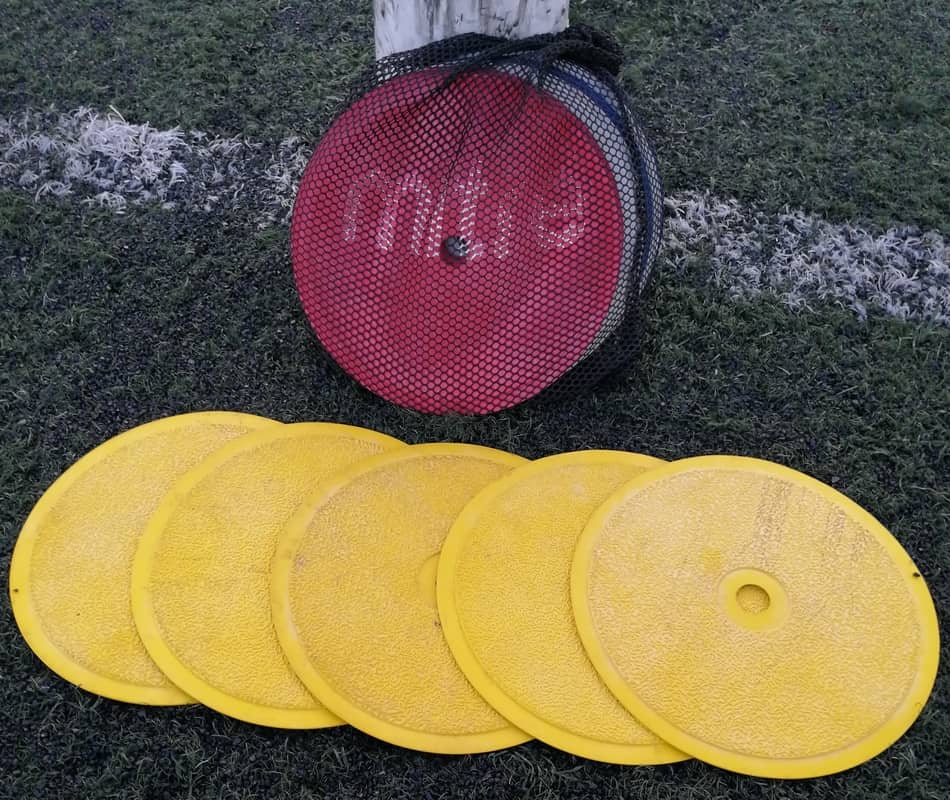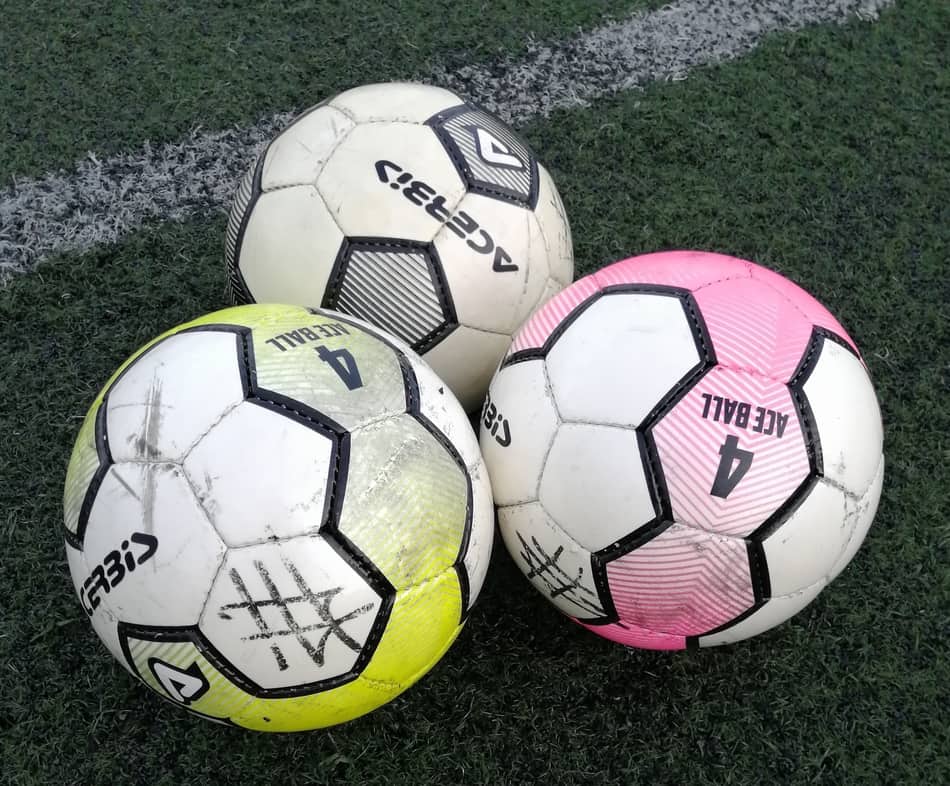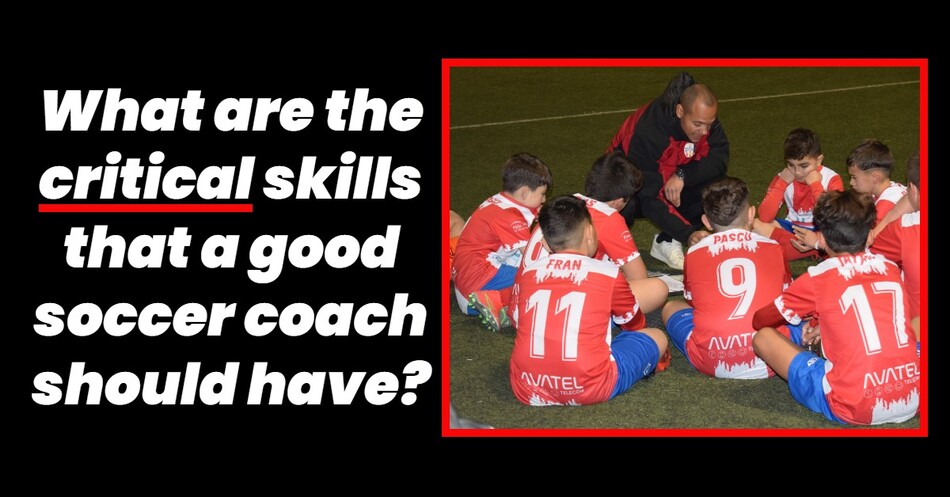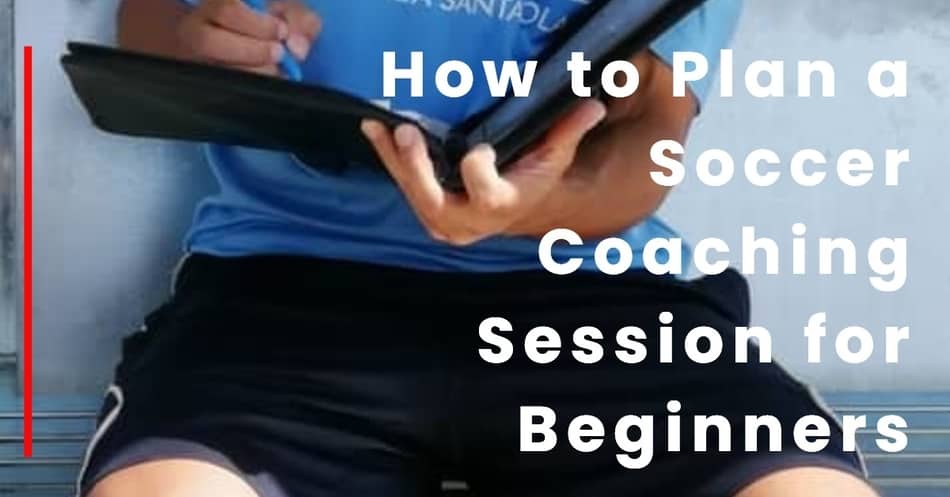Whenever anyone starts coaching football (soccer), it is important that the coach has at least the basic materials to organise, set-up and carry out a training session.
In this blog, I will share with you all the most important things that a coach needs and more.
Plus a bonus drill creation tool to help you plan your training sessions.
Here is a list of of equipment that every football coach needs:
- Session resources
- Cones
- Discs
- Bibs
- Ball pump
- First aid kit
- Balls
Whilst the list may appear to be quite obvious, for many coaches it is common to be sharing equipment that the club provides with other coaches of the same organisation. This can be an issue if there is not enough equipment for both.
That is why I believe every coach should possess certain equipment that is your own so that you can plan sessions in which you know you have the correct materials, and you will always be able to have an alternative plan of action if the equipment needed is not available on arrival to training.
Session Resources
This is essential to any coach and probably more pertinent for newer coaches. I am sure if you were to ask any experienced coach if they have some type of folder with various training drills, they would be able to show you an array of drills that they have collected and used over the years.
For a new coach, with little experience, this might not be the case. If you are a new coach and have just started coaching a team, my first piece of advice is to ask the club for a folder of training sessions that are appropriate for your given age group.
Every well run club should have some type of training resource folder (just as a school provides resources for their teachers) that they can provide to new coaches joining the club.
Another way would be to ask various coaches that you know. As long as you ask politely, I am certain other coaches will be delighted to help. Also, I am sure the experienced coaches of today received help from older experienced coaches before them and so it is important that we all help each other when needed.
Remember: As coaches, our role is to help improve our players but also, when the opportunity arises, can we make a positive impact on fellow coaches and play a part in their development.
Cones

In the majority of training drills, we are required to mark out a specific area of the field so that the players are aware of the playing area or playing zones. This can be done with the use of cones, which is why they are so important for a coach to have.
However, at times when you are using a number of playing zones, cones can actually disrupt play. For example, the ball might roll over a cone and therefore deflect the direction of the pass.
Discs

With that in mind (regarding cones), this is where the use of flat discs have become an important part of equipment for coaches. These discs allow you to make out a playing area but due to the discs lying flat on the ground, the ball can simply roll over the disc and so no disruption is caused to the play.
Bibs
Having a good number of bibs and a minimum selection of 2 colours is a must. If players are having to remember who is on their team, this can take away from the speed of play (having to take a second look who they are passing to) and is also psychologically draining.
For this reason, having bibs and a choice of two colours is really important.
The reason I state 2 colours is so that you can divide the players into 2 teams and still have the flexibility, if you have an odd number of players, to add a free (joker) player who would be a non-bib.
Ball Pump
At some point, every coach will collect the balls before training or an actual game and realise that some of the balls are a little flat. I can guarantee that some coaches out there would have had this problem and wished they had a ball pump with them.
So to avoid this situation, a ball pump is a vital piece of equipment that every coach should have close by.
First Aid Kit

All coaches should have completed a first aid course and every year, or a minimum of every 2 years, take part in a refresher course. You never know what is going to happen and so you, the coach, might be the only person that is able to give first aid to the injured player.
Hopefully there will never be anything too serious like the Cristian Eriksson situation but there will always be some cuts and sprained ankles etc to deal with.
Having a first aid kit, that at least contains the most basic of things, is a requirement at every training session and match.
Here is a list of basic thing that should be in your first aid kit:
- Plasters
- Bandage
- Antiseptic
- Scissors
- Ice pack
- Cold spray (read label for instructions and age related issues)
- Wound dressing
You should not give any tablets to children, unless you have permission from the child’s parents or guardians.
Balls

Yes, I know… having balls is more than an obvious one, and the most important. However, I want to look at this in a slightly different way.
I have seen many players using a ball that is not the appropriate size for their age.
Now I am not judging the coaches, as I did not know the circumstances as to why they were using footballs that were too big. Perhaps the coach was given the balls by the club to use, so this is not a judgement on those coaches as we all have to work with what we are given.
I just would like to raise the point that having the correct size balls, for the players that you are working with, is so important. For players to practice and develop ball skills, they must be able to learn how to manipulate the ball. This can be made more difficult if the ball is too big and so lead to frustration and be demotivating for players.
We should also aim to have one ball for every individual to allow each player to get as many touches on the ball as possible.
Obviously, not all training drills will use a ball each (as this is not how the game works) but at the start of a session when players are taking part in arrival activities or during a warm-up that involves ball mastery skills, all players should have access to a ball.
The recommended size of football for each age group are as follows:
| Age Group | Football Size |
| 4 – 5 | Size 2 |
| U7 – U9 | Size 3 |
| U10 – U14 | Size 4 |
| U14 – Adults | Size 5 |
Free training drill creator tool
To help coaches who may not have access to a training drill creation tool, you can download (below) a free tool that will help you create your own library of training drills.
[et_bloom_locked optin_id=”optin_2″]
Download Free Training Drill Creator
[/et_bloom_locked]
As well as the essential items that have been listed above, there are many pieces of equipment that can help coaches make the most out of each training session and be more engaging for players.
So let’s take a look at alternative pieces of equipment that you will want to use at some point in certain training sessions.
Hurdles
Hurdles can be used for coordination and plyometric work in an isolated exercise or as part of a combined drill.
Mannequins
On many occasions I have placed cones to represent rival players but mannequins offer a more realistic visual aid to players. An alternative to mannequins can be the use of large cones with a pole placed in the cone.
Mini goals
These are great for small-sided games, especially when you want to use more than 2 goals, and passing exercises with kids where you can award points for accurate passess into the goal.

How Do You Make Football Training Fun For Kids
#Kids Team having Fun with Medals Coaching a youth soccer team can be a lot of fun, but it can be challenging when some kids need more motivation to practice. It's frustrating for everyone involved when the coach has to...


